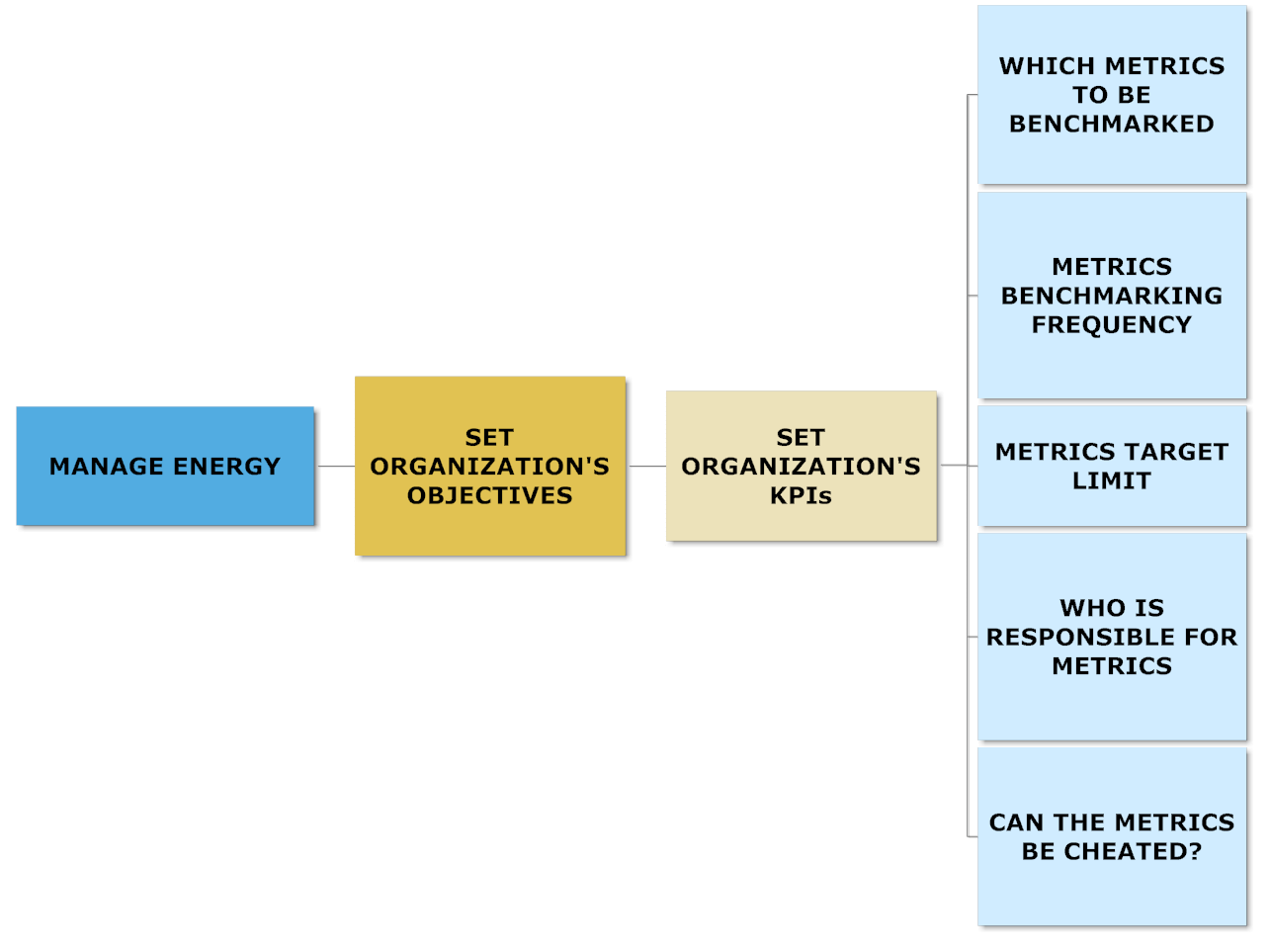MEASURING, MONITORING AND MANAGING ENERGY EFFICIENCY
1. Energy Metrics and Key Process Indicators (KPIs) which are relevant to an installation can be tracked as a measure of energy efficiency. As a minimum, energy intensity (EI) should be tracked. EI is the energy used per unit of production, and is usually expressed as kWh/unit or BTU/unit. It should include all forms of energy used at the installation.
2. Measurement and benchmarking are required to determine the baseline performance at the process or area in the installation. It is also possible to compare the installation’s energy efficiency to that of other units/plants in the company or industry.
3. Establish targets for energy efficiency during times of low, normal and high utilization. Progress towards these targets should be measured, trended and reported.
4. There should be clear responsibility and accountability for the set Energy Metrics and KPIs with full top management support.
5. In addition to site level targets, corporate energy goals should also be established in line with “Energy Policy”.
6. Energy Metrics and Key Process Indicators (KPIs) should be displayed on dashboards and visible to everyone at the installation. These KPIs should include energy users in areas selected as energy reduction focus areas.
7. Trainings on understanding the KPIs and required actions to monitor and manage the installations energy efficiency should be conducted periodically.


 Malaysia
Malaysia